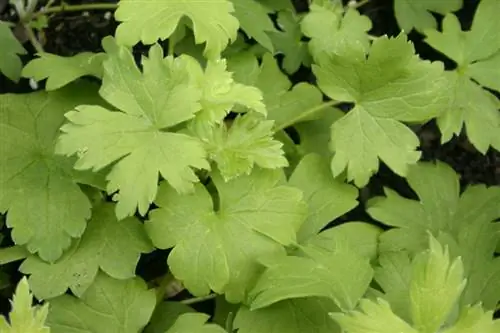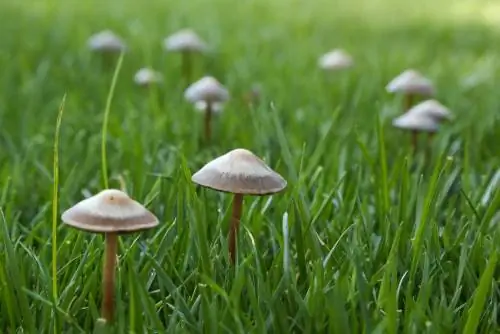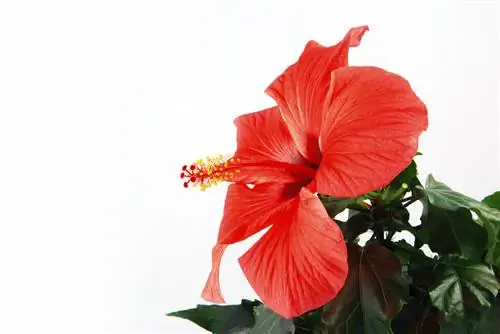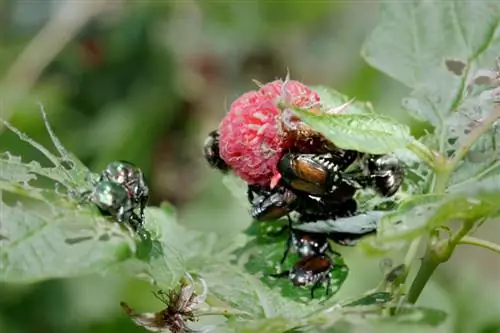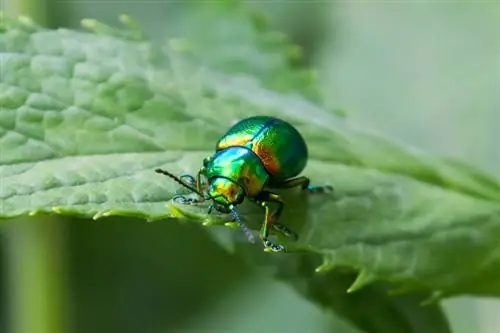- Author admin [email protected].
- Public 2023-12-16 16:46.
- Last modified 2025-01-23 11:20.
The leaves of the delphinium (lat. Delphinium) can look very different depending on the variety. Some delphiniums have palmate leaves, others are three-lobed or even very divided. What all varieties have in common, however, is that their leaves sit very low on the perennial, with only the flower spikes at the top.

What do the leaves of the delphinium look like and what problems can occur?
The leaves of the delphinium can have different shapes, such as palmate, three-lobed or strongly divided. Yellow leaves indicate nutrient deficiency, black leaves indicate bacterial infection, and white or gray leaves indicate powdery mildew. Adapted care and treatment is crucial for the he alth of the plant.
Leave leaves on the plant
When caring for the delphinium, you should be careful not to wet both the leaves and the flowers with water. On the one hand, the fine water droplets act as a kind of burning glass in strong sunlight and can cause burns. On the other hand, they also offer a welcome home for moisture-loving bacteria and fungi. Even when pruning the withered parts in summer, you should only cut the stems off to just above the leaf line. If you cut deeper (and remove leaves), it will be much harder for the delphinium to sprout again.
Identifying disease infestation on the leaves
You can easily tell from its leaves whether the delphinium is he althy or not. That's why we would like to introduce you to some clinical pictures and their treatment options at this point.
Leaves turn black
As soon as the leaves turn black and their surface bulges, the plant is infected with the bacterial pathogen Pseudomonas delphinii (also known as “bacterial blackness”). Brownish to black spots, which later lead to complete discoloration, are an indication of leaf spot disease. Both diseases are highly contagious, which is why affected parts must be removed and disposed of immediately.
Leaves turn yellow
Yellow leaves, on the other hand, are less a sign of illness than a sign of deficiency. If the leaves of the delphinium turn yellow, there is a nutrient deficiency - which, however, can be caused not only by a lack of or insufficient fertilization, but also by root rot caused by waterlogging. However, if only fertilization is missing, you can make up for it with quickly usable liquid fertilizer (€18.00 on Amazon).
Leaves turn white or gray
Dark spur is very susceptible to powdery mildew, which occurs primarily on hot and dry days (and is therefore popularly known as the “fair weather fungus”). Infected leaves appear to be covered in white or gray flour. Immediately cutting back affected parts of the plant as well as preventive treatment with a decoction of herbs or milk helps against mildew. As a rule, home remedies help very well with mildew.
Tips & Tricks
To treat mildew with milk, mix (boiled and cooled) water in a 1:1 ratio with full-fat UHT milk. On sunny days, spray the plant with the mixture every two to four days for at least two weeks.

